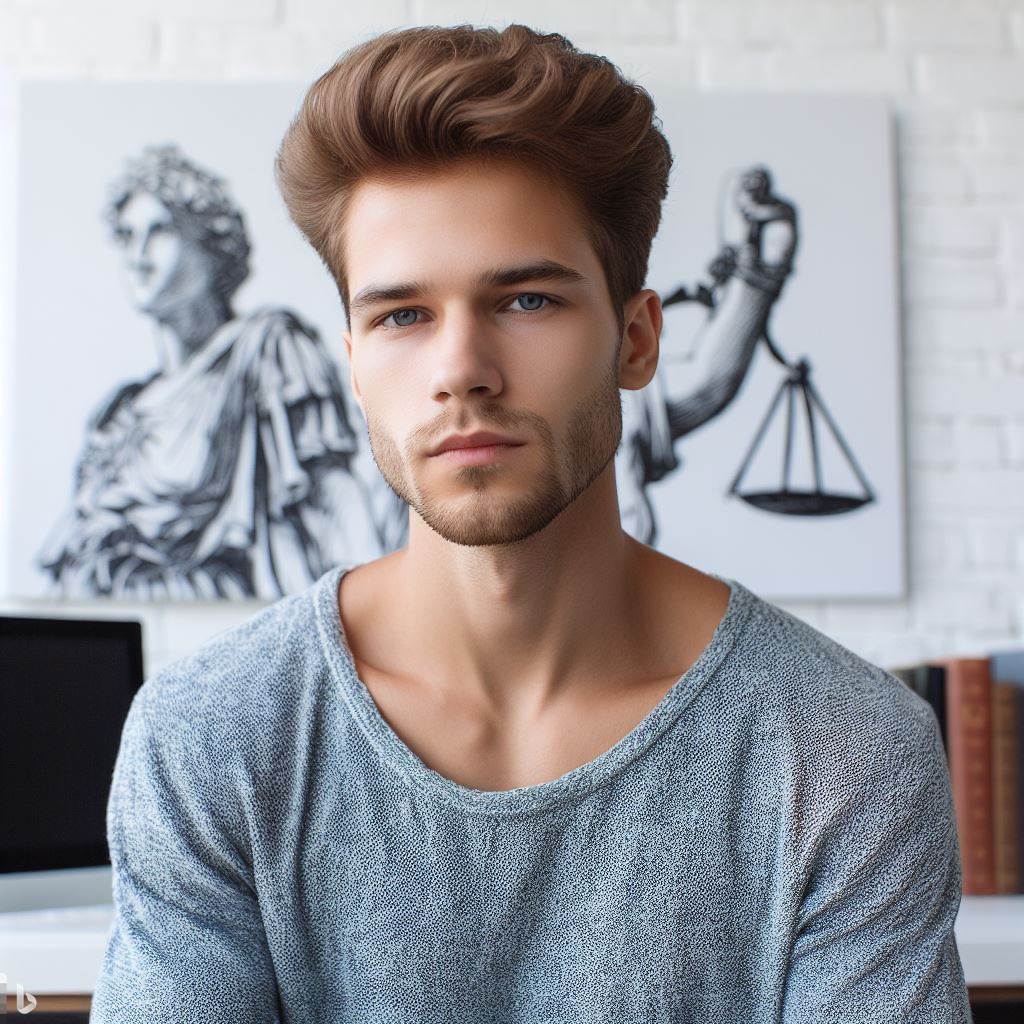Introduction
Definition of Copyright
Copyright, a legal shield, safeguards artists’ creative expressions, granting exclusive rights. It covers original works of authorship, ensuring protection.
Importance of Copyright in the Art Industry
In the art realm, copyright is paramount, It safeguards artists’ livelihoods, fostering innovation and creativity. Without it, exploitation looms.
Copyright Basics
Definition and purpose of copyright
- Copyright is a legal protection that grants exclusive rights to creators of original artistic works.
- Its purpose is to encourage the creation of new works and provide creators with control over their creations.
How copyright protects original artistic works
- Copyright grants the creator the right to reproduce, distribute, display, and perform their work.
- It also allows the creator to create derivative works based on their original creation.
- This protection extends to various forms of art, including paintings, sculptures, photographs, music, literature, and films.
- Originality and creativity are key factors in determining the eligibility for copyright protection.
Duration of copyright protections
- Copyright protection exists from the moment a work is created and fixed in a tangible form.
- For works created after January 1, 1978, copyright lasts for the life of the author plus an additional 70 years after their death.
- For anonymous or pseudonymous works, or works made for hire, the duration is 95 years from publication or 120 years from creation, whichever is shorter.
- Certain works created before 1978 have different durations, so it is essential to understand the specific rules.
Understanding copyright is vital for artists, ensuring protection of their intellectual property and creative works. Artists control usage, reproduction, and distribution through obtained copyright.
This protection prohibits unauthorized profit, acting as an incentive for creators and offering legal and economic recognition.
Copyright safeguards expressions, not ideas, concepts, or facts, with a limited duration. Once copyright expires, works enter the public domain, available for unrestricted use.
Thorough research and legal guidance are crucial to verify a work’s public domain status. In the United States, copyright is pivotal, allowing creators to control, innovate, and reap economic benefits.
Artists navigating the legal landscape must comprehend copyright’s definition, purpose, and scope.
Proper copyright protection ensures art preservation, valuing and respecting creative contributions for future generations.
Read: Navigating the US Art Market: Tips for Emerging Artists
Copyright Law in the United States
Overview of the Copyright Act
- Copyright law in the United States protects the original works of authorship in various mediums.
- The Copyright Act grants creators the exclusive rights to reproduce, distribute, perform, or display their works.
- These rights are automatic and do not require formal registration, although it is recommended.
- Works created after January 1, 1978, are protected for the author’s lifetime plus an additional 70 years.
- Copyright protection begins as soon as the work is fixed in a tangible medium of expression.
Copyright Office and registration process
- The United States Copyright Office is responsible for handling copyright registration.
- While registration is not mandatory, it provides various benefits and legal advantages.
- To register a copyright, the applicant must submit an application, fee, and a copy of the work.
- Registration allows for easier enforcement of rights and provides evidence in case of infringement claims.
- It also permits the use of federal court and statutory remedies in case of legal disputes.
Fair use doctrine and its application in art
- The fair use doctrine allows the limited use of copyrighted material without permission from the owner.
- It is not an absolute right and is determined on a case-by-case basis, considering four key factors:
- The purpose and character of the use, including whether it is commercial or nonprofit.
- The nature of the copyrighted work, such as its creativity and value.
- The amount and substantiality of the portion used in relation to the whole work.
- The effect of the use on the potential market for the copyrighted work.
- The purpose and character of the use, including whether it is commercial or nonprofit.
- In the context of art, fair use may apply when using copyrighted material for transformative purposes.
- Artistic expression, commentary, criticism, parody, and education can be considered fair use.
- However, determining fair use in art can be subjective and dependent on the specific circumstances of each case.
- It is advisable to seek legal advice to assess the fair use implications before using copyrighted material in art.
In essence, copyright law in the United States protects original works of authorship and grants creators exclusive rights.
While registration is not mandatory, it provides significant benefits. The fair use doctrine allows limited use of copyrighted material, including in art, but it must be assessed on a case-by-case basis.
To ensure compliance with copyright law, it is always recommended to consult legal professionals.
Read: Top US Art Schools: A Comparative Review for Aspiring Artists
Copyright Infringement in Art
Types of infringement in the art field
- Direct Copying: When one artist reproduces another’s work without permission or attribution.
- Derivative Works: Creating new artwork based on copyrighted material without authorization.
- Plagiarism: Passing off someone else’s work as your own in the art world.
- Parody: Using copyrighted material in a humorous or satirical manner, protected under fair use.
Examples of real-life copyright infringement cases in art
- Shepard Fairey vs. Associated Press: Fairey used an AP photograph of Obama for his “Hope” poster without permission.
- Richard Prince vs. Patrick Cariou: Prince used Cariou’s photographs without permission and transformed them into artworks.
- Jeff Koons vs. Art Rogers: Koons used Rogers’ photograph of a couple and recreated it as a sculpture.
Consequences of copyright infringement
- Legal action: The copyright holder can file a lawsuit seeking damages or an injunction to stop further infringement.
- Financial penalties: Infringers may be required to pay actual damages, profits earned, and the copyright holder’s legal fees.
- Loss of reputation: Artists found guilty of infringement can suffer significant damage to their professional standing.
- Destruction of infringing works: Courts may order the destruction of artworks that infringe on copyrights.
- Limited career opportunities: Artists with a reputation for copyright infringement may find it hard to secure collaborations or licenses.
Respecting copyright and understanding the various forms of infringement is crucial for artists.
Direct copying, derivative works, plagiarism, and parody all require careful consideration to avoid legal consequences.
Real-life examples like Fairey vs. Associated Press and Koons vs. Rogers highlight the importance of obtaining permission.
Consequences for infringement can be severe, leading to legal penalties, financial loss, reputation damage, and limited career opportunities.
As artists, it is our responsibility to respect the rights of others and ensure that our artistic expressions stay within legal boundaries.
Read: Income Realities: What US Artists Really Earn Today
Best Practices for Artists to Protect Copyright
Marking artwork with copyright information
- Artists should prominently display the copyright symbol © or the word “Copyright” on their artwork.
- Including the year of creation and the artist’s name also helps establish copyright ownership.
- Clear and visible copyright markings deter potential infringers and indicate the artist’s intent to protect their work.
Registering artworks with the Copyright Office
- Artists should consider registering their artworks with the U.S. Copyright Office.
- Registration provides important legal benefits, including the ability to bring a lawsuit for copyright infringement.
- Registering within three months of publication or before any infringement occurs allows for statutory damages and attorney’s fees.
- It is advisable to consult an attorney or a copyright specialist when navigating the registration process.
Monitoring and addressing unauthorized use
- Artists should actively monitor the use of their artwork to identify any unauthorized reproductions or derivatives.
- Regularly searching online platforms, galleries, and exhibitions can help detect unauthorized use.
- If unauthorized use is discovered, artists should document evidence and collect relevant information.
- Issuing a cease and desist letter or sending a DMCA takedown notice can be effective in stopping infringement.
- In some cases, artists may need to seek legal recourse and engage an attorney to protect their copyright.
- Collaborating with a legal professional knowledgeable in copyright law can help navigate complex infringement cases.
By following these best practices, artists can enhance their copyright protection:
Transform Your Career Today
Unlock a personalized career strategy that drives real results. Get tailored advice and a roadmap designed just for you.
Start Now- Understanding the importance of copyright and actively asserting ownership rights.
- Properly marking artwork with copyright information, including the symbol, year, and artist’s name.
- Considering registration with the U.S. Copyright Office to strengthen legal protection.
- Regularly monitoring and detecting unauthorized use of artwork.
- Responding promptly and appropriately to unauthorized use, using cease and desist letters or legal action when necessary.
While these practices cannot guarantee complete protection, they significantly enhance an artist’s ability to protect their creative works and pursue legal remedies.
Read: The Evolution of the Artist Career in the USA: A Timeline

Copyright and Art Licensing
Copyright licensing and permissions
- Copyright licensing grants the right to use and distribute original artistic works legally.
- Artists can grant licenses to others, allowing them to reproduce or display their work.
- Licensing ensures that artists retain control over their creations while earning royalties or fees.
- It is important to obtain permission and proper licensing before using copyrighted artwork.
- 5. Unauthorized use can lead to legal consequences such as fines and damage to the artist’s reputation.
- Copyright holders have the exclusive right to determine how their work is used and reproduced.
- Licensing agreements specify the scope and duration of the permission granted to the licensee.
- Licensees must comply with any restrictions or limitations outlined in the licensing agreement.
- Artists can negotiate licensing agreements to protect their rights and control over their artwork.
- Licensing offers a way for artists to monetize their creations and generate income through different avenues.
Pros and cons of licensing artworks
- Pros of licensing: artists can earn royalties from the commercial use of their art.
- Licensing allows artists to reach a wider audience and gain exposure through various mediums.
- Licensing can help artists establish themselves in the art industry and build their reputation.
- Artists can maintain control over the integrity and quality of their work through licensing agreements.
- Cons of licensing: artists may face challenges in monitoring and enforcing proper usage of their work.
- Licensing can create competition and dilute the exclusivity of an artist’s creations.
- Artists may need to invest time and resources to negotiate and manage licensing agreements.
- Licensing can limit an artist’s ability to freely use and share their own work.
Understanding the terms and conditions of licensing agreements
- Licensing agreements outline the specific terms and conditions under which the artwork can be used.
- Licensees must carefully review and adhere to the restrictions and limitations stated in the agreement.
- The agreement may specify the duration of the license and any geographical restrictions.
- Licensees may be required to pay royalties or licensing fees to the copyright holder.
- Some license agreements may include provisions for exclusivity or limitations on the type of usage.
- Artists should consult with legal professionals to ensure that licensing agreements protect their interests.
- Artworks licensed for commercial purposes may require additional permissions and releases, such as model or property releases.
- Violation of the terms and conditions of a licensing agreement can result in legal action and damages.
- Artists should consider the potential benefits and risks before entering into licensing agreements.
- Careful consideration and understanding of licensing terms can help artists navigate the complexities of copyright and protect their artistic rights.
In general, copyright licensing plays a crucial role in protecting the rights of artists and ensuring fair compensation for their creative works.
By understanding the licensing process, artists can effectively monetize their art while maintaining control over its usage.
However, it is essential for both artists and licensees to comprehend and adhere to the terms and conditions outlined in licensing agreements to avoid legal issues.
Proper licensing promotes a vibrant and thriving art industry that benefits artists and art enthusiasts alike.
Copyright Alternatives for Artists
In this section, we will explore three copyright alternatives for artists in the United States.
Creative Commons licenses
- Creative Commons licenses offer a flexible way for artists to protect their work while allowing certain permissions.
- Artists can choose from different license types, such as attribution, non-commercial, and share-alike licenses.
- This allows them to maintain control over their creations while facilitating sharing and collaboration.
- Creative Commons licenses are widely recognized and used, making it easier for artists to protect and distribute their work.
Public domain and its implications
- Public domain refers to works that are not protected by copyright and can be freely used by anyone.
- Artists can choose to release their work into the public domain, allowing others to use, modify, and distribute it without restriction.
- However, once a work is in the public domain, the artist loses control over how it is used and attributed.
- Artists should carefully consider the implications of placing their work in the public domain before making a decision.
Using copyright waivers and releases
- Artists can use copyright waivers to grant permissions beyond the limitations of traditional copyright.
- By issuing a waiver, artists can allow others to use their work in ways that would typically be considered infringement.
- This can be beneficial for artists who want to encourage certain types of use or enable broader access to their work.
- Artists can use copyright release forms to grant permission for specific uses of their work.
These alternatives provide artists with options to protect and share their work in the United States.
Whether through Creative Commons licenses, placing work in the public domain, or using copyright waivers and releases, artists can navigate the complex landscape of copyright law while shaping the accessibility and reach of their creations.
It is important for artists to carefully consider their individual goals and intentions when choosing the most suitable copyright alternative.
By understanding these alternatives, artists can leverage copyright in ways that best serve their artistic vision, while also respecting the rights and interests of others.
Finding the right balance between protection and openness is key for artists seeking to thrive in the evolving digital age.
Conclusion
Recap of the key points discussed
- Copyright is a legal protection that grants exclusive rights to creators of original artistic works.
- In the United States, copyright is automatically granted upon creation and doesn’t require registration.
- Fair use allows limited use of copyrighted materials for purposes such as criticism, commentary, or education.
- Plagiarism is a serious offense and artists should give proper credit to avoid legal consequences.
- Derivative works and the concept of transformative use require permission from the original creator.
Importance of understanding copyright for artists
Artists need to understand their rights and limitations to protect their creations and avoid legal disputes.
They should also be aware of how to properly use and reference existing works to avoid infringing on others’ rights.
Encouragement to seek legal advice and stay informed about copyright laws
Artists should consult with legal professionals who specialize in copyright to ensure they are compliant with the law.
They should stay updated on any changes or updates in copyright legislation to protect their work effectively.
By being proactive and informed, artists can navigate the legal landscape and focus on their artistic endeavors.
[E-Books for Sale]
The Big Book of 500 High-Paying Jobs in America: Unlock Your Earning Potential
$19.99 • 500 High-Paying Jobs • 330 pages
Explore 500 high-paying jobs in America and learn how to boost your career, earn more, and achieve success!
See All 500 High-Paying Jobs of this E-Book
1001 Professions Without a Degree: High-Paying American Jobs You Can Start Now
$19.99 • 1001 Professions Without a Degree • 174 pages
Discover 1001 high-paying jobs without a degree! Unlock career tips, skills, and success strategies for just $19.99!




